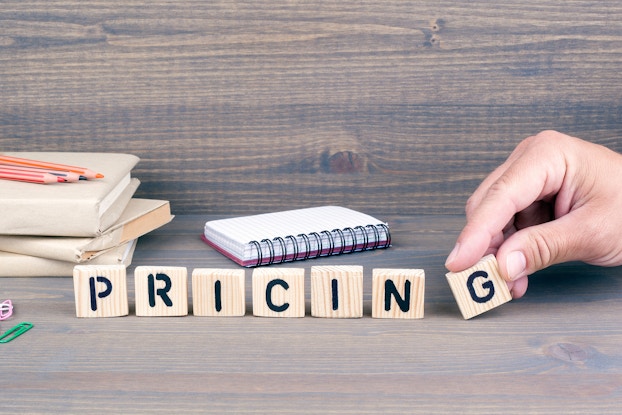
If you could create your own fantasy Board of Directors who would be on it? CO— connects you with thought leaders from across the business spectrum and asks them to help solve your biggest business challenges. In this edition, a CO— reader asks what factors should go into planning and setting a pricing strategy for your product or service.
Susan Lee, a partner at EY's Transaction Advisory Services group, answers…
Pricing is one of the most powerful margin levers a company can pull. If you underprice or overprice a product or service, it could potentially destroy the business.
Pricing also tells your customers your brand positioning and potentially signals your level of quality. If you underprice your product or offering thinking it's providing a bargain, some customers might see that low price as signal of poor quality and don't want to buy it, even though it is cheap.
Many companies spend a lot of time on R&D (research and development) or thinking about how they will go to market, and pricing strategy becomes an afterthought. We recommend that you think about the market's willingness to pay for an offering as you're building your business case, not after you’ve decided on everything.
There are a few questions you should ask before you think about setting the prices. First, what is the company ultimately trying to achieve with this product launch or business? Are you trying to aggressively penetrate a market or are you trying to skim part of the market initially and eventually gain market share over time with additional launches or initiatives?
We recommend that a new company think not just about the pricing strategy for one product, but the strategy for the overall portfolio.Susan Lee, partner, Transaction Advisory Services, Ernst & Young
Price right
EY's Susan Lee explains that your pricing strategy has the power to make or break your business. Read on for more pricing strategy tips.
Some companies say they want to penetrate a market with a low price and charge higher once they accumulate the customer base. The reality is, if you acquire customers with low price, charging a higher price later is extremely difficult. You'll have to offer a more premium product over time and try to upsell and cross-sell to gain revenue and profit margin.
You'll also want to ask about the market situation. Who are the customer segments you're trying to go after? Who would your customers consider to be the alternatives, and compared to them, what is your relative competitive advantage?
Most businesses are entering a market with other offerings out there, so how they think about pricing needs to be relative to the existing market. For example, if your offering is similar to what already exists in the market, then your pricing power will be limited because people will see there is an alternative — and if you charge way more, then no one is going to buy your product. However, if you perceive that you offer a substantial benefit compared to what already exists, you might have a chance to charge a premium price.
Another question to ask is about your company's portfolio architecture. We recommend that a new company think not just about the pricing strategy for one product, but the strategy for the overall portfolio. What that means is, you should think through what the desirable price gap is between your products and plan accordingly.

We've found there's a certain psychology around giving customers an offer of three products — good, better, best. When you have a "premium" product on one end that offers a lot of benefits, and a "value" product on other end with stripped-down benefits, you are educating consumers on the value of different benefits and features. It enables them to bucket themselves into the right category and choose more easily. For example, if you have a premium product that you deliberately price a bit higher, it signals to customers that your middle product is really good value and could actually help you drive volume into the middle product.
Pricing strategy is not a one-and-done exercise. Often times companies don’t revisit their pricing, which is a very common mistake. They don't track what is happening in the market and what is happening to their volume relative to price.
That's why it is important to establish a process in-house to continuously learn about the market's willingness to pay for the product. We encourage companies to set up mini-pilots to test different price levels or ways of communicating price and value proposition, so they can continue to gain knowledge and insights from the market regarding price-value relationship.
CO— aims to bring you inspiration from leading respected experts. However, before making any business decision, you should consult a professional who can advise you based on your individual situation.
CO—is committed to helping you start, run and grow your small business. Learn more about the benefits of small business membership in the U.S. Chamber of Commerce, here.









